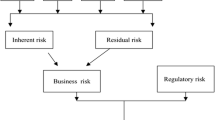Abstract
The importance of the global combating of money laundering and financing of terrorism has increased significantly over the past decade. One of the most fundamental research issues in Anti-Money Laundering (AML) area is how to efficiently and adaptively allocate the limited AML resource to analyze suspicious transactions to achieve the maximal AML rewards. In this paper, a novel Adaptive AML Resource Allocation Model (AAMLRAM) based on Semi-Markov Decision Process (SMDP) is proposed to allocate AML resources optimally in AML resource allocation domain to analyze the suspicious transaction report sent from Financial Institutions (FIs). Based on our proposed AAMLRAM, AML resource allocation domain can achieve the maximal AML rewards, taking into account not only the incomes of identifying the suspicious transaction but also the cost resulted from AML resource occupation as well. Extensive simulations are conducted to demonstrate that our proposed model can achieve the higher system reward compared to traditional approaches based on the greedy resource allocation algorithms.









Similar content being viewed by others
References
Mathias Dewatripont JT (1994) The prudential regulation of banks. The MIT Press
Masciandaro D, Filotto U (2001) Money laundering regulation and bank compliance costs: What do your customers know? Economics and the italian experience. Journal of Money Laundering Control 5(2):133–145
F. A. T. F. on Money Laundering, International Standards on Combating Money Laundering and The Financing of Terrorism and Proliferation-The FATF Recommendations (2012)
Geiger H, Wuensch O (2007) The fight against moneylaundering: An economic analysis of a cost-benefit paradoxon. Journal of Money Laundering Control 10(1):91–105
Sathye M (2008) Estimating the cost of compliance of AMLCTF for financial institutions in Australia. Journal of Financial Crime 15:347–363
Harvey J (2004) Compliance and reporting issues arising for financial institutions from money laundering regulations: a preliminary cost benefit study. Journal of Money Laundering Control 7:333–346
Saunders A, Cornett MM (2008) Financial Institutions Management: A Risk Management Approach Sixth Edition. McGraw-Hill
Sproat PA (2007) The new policing of assets and the new assets of policing: A tentative financial cost-benefit analysis of the UK’s anti-money laundering and asset recovery regime. Journal of Money Laundering Control 10:277–299
Masciandaro D (1998) Money laundering regulation: The micro economics. Journal of Money Laundering Control 2(1):49–58
RaffaellaBarone DM (2008) Worldwide anti-money laundering regulation: estimating the costs and benefits. Global Business and Economics Review 10(3)
Pellegrina Dalla Lucia DM, The Risk-Based Approach in the New European Anti-Money Laundering Legislation: A Law and Economics View (2009). Rev Law Econ 5(2)
Tang J, Yin J (2005) Developing an intelligent data discriminating system of anti-money laundering based on SVM. In: International conference on machine learning and cybernetics
Salerno JJ, Yu PS (2003) Applying data mining in investigating money laundering crimes:747–752
Kaboudan MA (2006) Biologically inspired algorithms for financial modelling. Genetic Programming and Evolvable Machines 7:285–286
Liu Y, Cai LX, Luo H, Shen X (2013) Deploying cognitive cellular networks under dynamic resource management. IEEE Wirel Commun 20:82–88
Su Z, Xu Q (2015) Content distribution over content centric mobile social networks in 5G. IEEE Commun Mag 53(6):66–72
Su Z, Xu Q, Zhu H, Wang Y (2015) A novel design for content delivery over software defined mobile social networks. IEEE Netw 29(4):62–67
Xu Q, Su Z, Guo S (2015) A game theoretical incentive scheme for relay selection services in mobile social networks. IEEE Trans Veh Technol PP(99):1–1
Zhu H , Du S , Gao Z , Dong M , Cao Z (2013) A probabilistic misbehavior detection scheme toward efficient trust establishment in delay-tolerant networks. IEEE Trans Parallel Distrib Syst 25: 22–32
Du S, Zhu H, Li X, Ota K, Dong M (2013) MixZone in motion: achieving dynamically cooperative location privacy protection in delay-tolerant networks. IEEE Trans Veh Technol 62:4565–4575
Zhu H, Lin X, Lu R, Fan Y, Shen X (2009) SMART: A secure multilayer credit-based incentive scheme for delay-tolerant networks. IEEE Trans Veh Technol 58:4628–4639
Liang H, Cai LX, Huang D, Shen X, Peng D (2012) An SMDP-based service model for inter-domain resource allocation in mobile cloud networks. IEEE Trans Veh Technol 18:2222–2232
F.F. I.E. (2010) Council, bank secrecy act/ anti-money laundering examination manual
Ramjee R, Towsley D, Nagarajan R (1997) On optimal call admission control in cellular networks. Wirel Netw 3(1):29–41
Mine SOH, Puterman ML (1970) Markovian decision process. Elsevier, Amsterdam
Puterman M (2005) Markov decision processes: Discrete stochastic dynamic programming. Wiley, New York
MathWorks, Matlab, available at http://www.mathworks.com
Author information
Authors and Affiliations
Corresponding author
Additional information
This work was supported in part by the National High-Tech Research and Development Program of China(863 Program, Grant No: 2015AA01A705), the National Natural Science Foundation of China (Grant No. 61571375), the Science and Technology Support Program of Sicuan Province (Grant No. 2015GZ0088) and the National Social Science Foundation of China (Grant No. 12XJY028).
Rights and permissions
About this article
Cite this article
Hong, X., Liang, H., Gao, Z. et al. An adaptive resource allocation model in anti-money laundering system. Peer-to-Peer Netw. Appl. 10, 315–331 (2017). https://doi.org/10.1007/s12083-016-0430-y
Received:
Accepted:
Published:
Issue Date:
DOI: https://doi.org/10.1007/s12083-016-0430-y




